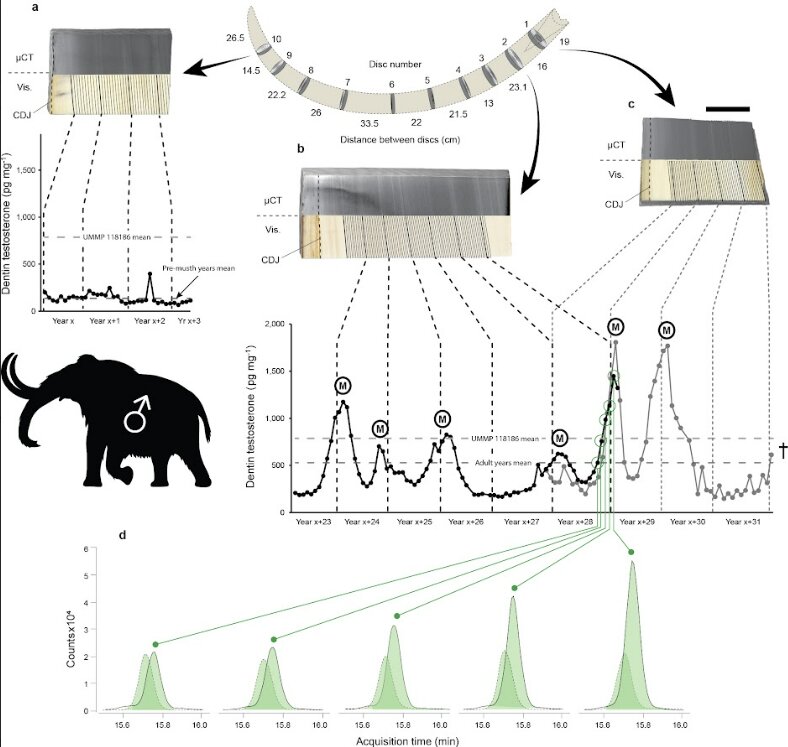A new study led by the University of Michigan has found that traces of sex hormones extracted from a woolly mammoth’s tusk provide the first direct evidence that adult males experienced musth, a testosterone-driven episode of heightened aggression against rival males. This was previously recognized in male elephants from blood and urine tests, and in extinct relatives of modern elephants from skeletal injuries, broken tusk tips, and other indirect lines of evidence. However, this is the first study to show that testosterone levels are recorded in the growth layers of mammoth and elephant tusks. The U-M researchers and their international colleagues report annually recurring testosterone surges, up to 10 times higher than baseline levels, within a permafrost-preserved woolly mammoth tusk from Siberia. The adult male mammoth lived more than 33,000 years ago. The testosterone surges seen in the mammoth tusk are consistent with musth-related testosterone peaks the researchers observed in an African bull elephant tusk. The word “musth” comes from the Hindi and Urdu word for intoxicated.
2023-05-03 11:05:20
Source from phys.org
